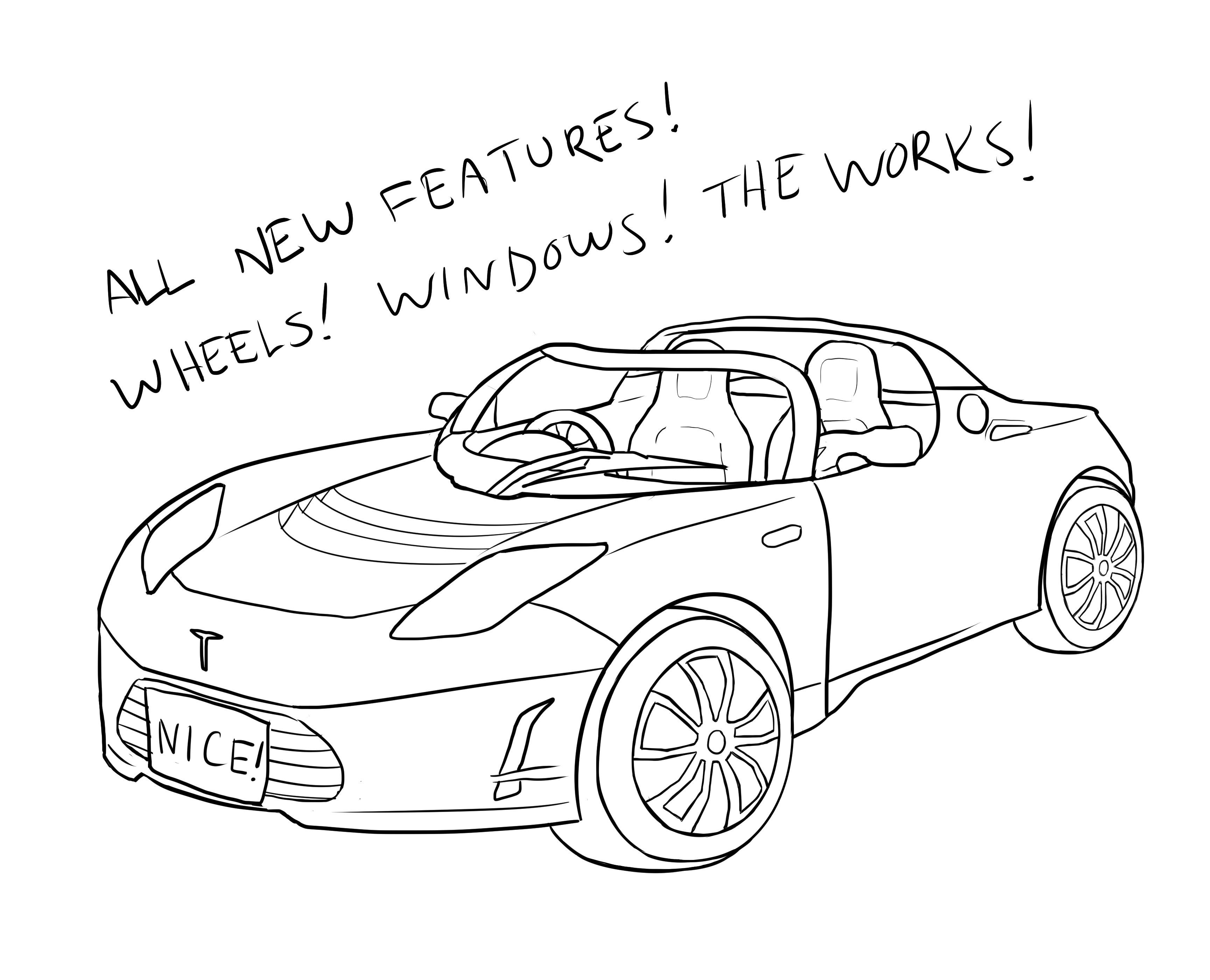I am not a car person.
I want to make that clear before I get into this. I will not, throughout this article, be making use of that secret language spoken only by gleaming-eyed car enthusiasts. To me, ‘horsepower’ and similar do not directly translate to any physical or spiritual qualities possessed by a lump of metal being propelled through space via a series of tiny explosions. That being said, given the apparent collapse of Top Gear, there seems to be a vacancy for egotistical loudmouths in the field of automotive journalism and I’m ready to step up.
Early in March I found myself on the field at the RAC Driving Centre for Electrikhana, the Australian Electric Vehicle Association’s showcase of what’s been going on in the friendlier side (environmentally, at least) of driving enthusiasm. It was a sight to behold: vehicles parked in a line, gleaming like all of the tomorrows promised in the seventies, achieved in the late eighties and then hidden in the back of the closet until about ten years ago.
The resurgence in interest in electric cars has coincided with the arrival of a few almost excessively sleek and sporty options developed by companies like BMW and Elon Musk’s Tesla, both of which were well represented on the day. This is a bigger deal than it sounds, since distribution is still limited here. According to the proud Tesla S owner I spoke to, the three Tesla which were on display were the only three currently owned in WA. Interspersed with these gleaming behemoths and their frighteningly colossal price tags were representatives of the more approachable end of the market: the Nissan Leaf, the Holden Volt, Mitsubishi’s iMiEV and Outlander PHEV, and a host of home conversions and smaller projects, including UWA’s own Green Machine.
Despite these, there’s little doubt that the electric car industry right now is trying to sell to holdouts of combustion engines. Often reviled for prizing sustainability over performance (read: speed) and aesthetics, the manufacturers of electric cars have been working hard to prove that a sports car with an electric engine is still, first and foremost, a sports car, something to be lusted after and proudly displayed on the lawn of a weekend. Part of developing this appeal is letting people experience the ride, which is one of the main reasons the early adopters were so keen to come along to the event. The line to ride along in the Teslas and BMWs didn’t let up all day and it was half an hour before I was buckling myself into the backseat of the slate grey Tesla S and introducing myself to the owner.
Inside, the Tesla has enough lights and buttons to make Kirk feel insecure about his bridge. The central console is a screen larger than my laptop. The owner rattled off a list of mod-cons: Wi-Fi hotspots and door handles that hide flush to the body of the car and presumably some sort of drainage for all the drooling in the passenger seats. Most importantly, though, was the immediately noticeable lack of any sort of rumble as we pulled out onto the test track. It is an odd sensation, as though the car were floating a few centimetres from the surface of the road. The driver put his foot down as he explained the important details: the Tesla S does 0 to 60 in 5.4 seconds, I was told, which in a silent car feels a lot like heading into warp, and it can travel around 420km on a full charge, depending on the size of the battery pack. Basically, it goes like greased weasel shit on a hot day.
But the spirit of competition is alive and well at the Driving Centre. As I was scribbling notes after my jaunt in the Tesla, I was approached by Tim Hughes, one of the instructors at Perth Supercars, who offered to show me the other side of driving – a few hot laps in a Ferrari 360 Modena. Up until that point, I couldn’t claim to have understood the appeal of supercars, but there is something incredibly seductive about the roar of the Ferrari as it accelerates. Unlike the Tesla, which glides above the road on a cloud of smug self-satisfaction, the Ferrari is animalistic and gives the impression of enjoying chewing up the track as much as the driver. It is just about as exhilarating as any Fast & Furious movie would have you believe.
Even as electric vehicles are, without doubt, the transportation we will end up with, there is something to be said for the pleasure of going really fast in a car that’s really loud. Electrikhana was a demonstration of how far the automotive industry has come in trying to balance the desires of drivers with the need to soften the impact of driving.
You can expect to pay over $100,000 plus import fees in order to get hold of a Tesla in Australia at the moment. Perth Supercars runs laps on weekends at the RAC Driving Centre for anyone who wants a spin in a Ferrari or a Lamborghini; $349 will get you 5 laps and they’ll throw another one on top for fun. For more information, email [email protected].
Words by Morgan Goodman

